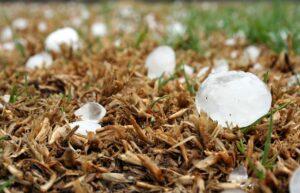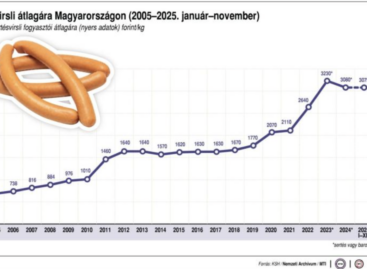Tens of billions of forints in damages were prevented by the national ice damage mitigation system this year as well
Despite the extremely stormy weather, there was much less ice damage in our country than in other countries of the region.

(Photo: Pixabay)
The national ice damage mitigation system operated by the National Chamber of Agrarian Economy (NAK) protected agricultural, residential and commercial values from ice damage again this year. During the protection season between April 15 and September 30, the soil generators that deliver silver iodide into the ice-threatening clouds had to be switched on for 93 days, for a total of nearly 188,000 operating hours. The generators thus operated 6% longer than last year.
This summer was extremely hot: both July and August were characterized by long-lasting, intense heat waves
In the 1970s, the daily maximum temperature was higher than 30 degrees Celsius on average on 27 days during the summer in Hungary. In comparison, this year, the daily maximum temperature exceeded 30 degrees on 78 days (85%) of the 92 days of summer and 35 degrees on 43 (ie almost every other) day. Despite the fact that the weather was extremely dry, the moisture content of the air was high, which favored the formation of localized, violent thunderstorms and supercells. In the 169-day protection season between April 15 and September 30, clouds with a risk of ice formed every second (total of 93) days over our country, of which thunderstorms were extremely dangerous for ice on 32 days. This year’s extraordinary weather is clearly shown by the fact that the latter number is almost double that of last year. Cloud-top heights of over 14,000 meters have been measured on several occasions. Here, the temperature is so low (minus 40-50 degrees Celsius) that the ice grains can grow to huge sizes in seconds. While huge hail damage occurred across Europe this year – in Germany and Poland, for example, hail caused severe damage to agricultural areas – in Hungary, thanks to the ice damage mitigation system, only much smaller damage could be experienced.
The ground generators had to be switched on for 93 days this year, for a total of nearly 188,000 operating hours
Due to the extraordinary weather, hail formed in more places than in recent years, even with protection. In the protection period of 2024, farmers reported ice damage to an area 60% larger than last year, 47,000 hectares. However, even with the increasingly extreme weather, this is a significantly smaller area than in 2017, the last year when the national system did not work, when ice damage was reported for an area one and a half times as large, 72 thousand hectares. The system that sends silver iodide into the clouds from 986 points in the country – with the help of 219 automatic and 767 manual soil generators – prevents tens of billions of forints in damage to agriculture every year, and also protects residential, industrial and state facilities, real estate and chattels. This year was the seventh year of operation of the system built by NAK, and the Ministry of Agriculture provides a maximum of 2 billion forints per year for its operation. According to calculations, every HUF spent on the system saves about HUF 33 in production value, which means 50 billion HUF in saved production value annually. In Hungary this year, too, one extreme thunderstorm or supercell (against which there is no defense anywhere in the world) typically caused significant damage in smaller areas.
The generators burn an active substance containing silver iodide, which rises up into the clouds, reducing the size of the ice particles that form there
The probability of the occurrence of hail cannot be completely excluded, but it can be guaranteed that the size of falling ice particles will be smaller than those that would fall without using the system. During the rest of the year, maintenance work on the system will be carried out, preparing it for the next defense season starting in the spring of 2025.
NAK
Related news
NAK: it’s worth buying Hungarian sausages on New Year’s Eve too
🎧 Hallgasd a cikket: Lejátszás Szünet Folytatás Leállítás Nyelv: Auto…
Read more >Chamber of Agriculture: 10 percent more new wine was produced this year than last year
🎧 Hallgasd a cikket: Lejátszás Szünet Folytatás Leállítás Nyelv: Auto…
Read more >This year, 10 percent more new wine was produced than last year
🎧 Hallgasd a cikket: Lejátszás Szünet Folytatás Leállítás Nyelv: Auto…
Read more >Related news
Fidelity Kitekintés 2026: Ne becsüljük alá az inflációt!
🎧 Hallgasd a cikket: Lejátszás Szünet Folytatás Leállítás Nyelv: Auto…
Read more >Company Trend 2025 – domestic businesses under strong pressure, in a negative trend
🎧 Hallgasd a cikket: Lejátszás Szünet Folytatás Leállítás Nyelv: Auto…
Read more >Surprising ordering statistics: foodora sampled the ordering habits of Hungarians in 2025
🎧 Hallgasd a cikket: Lejátszás Szünet Folytatás Leállítás Nyelv: Auto…
Read more >







